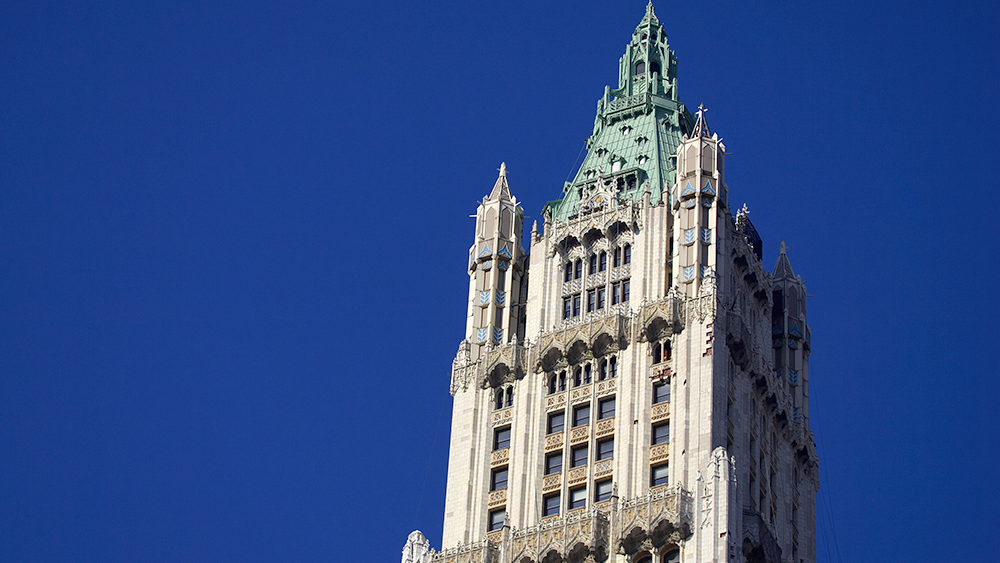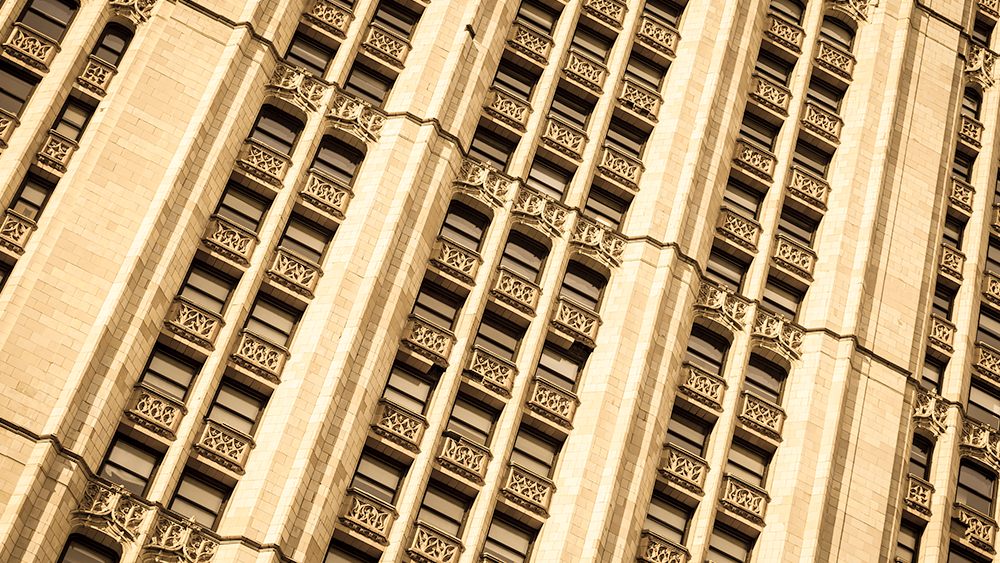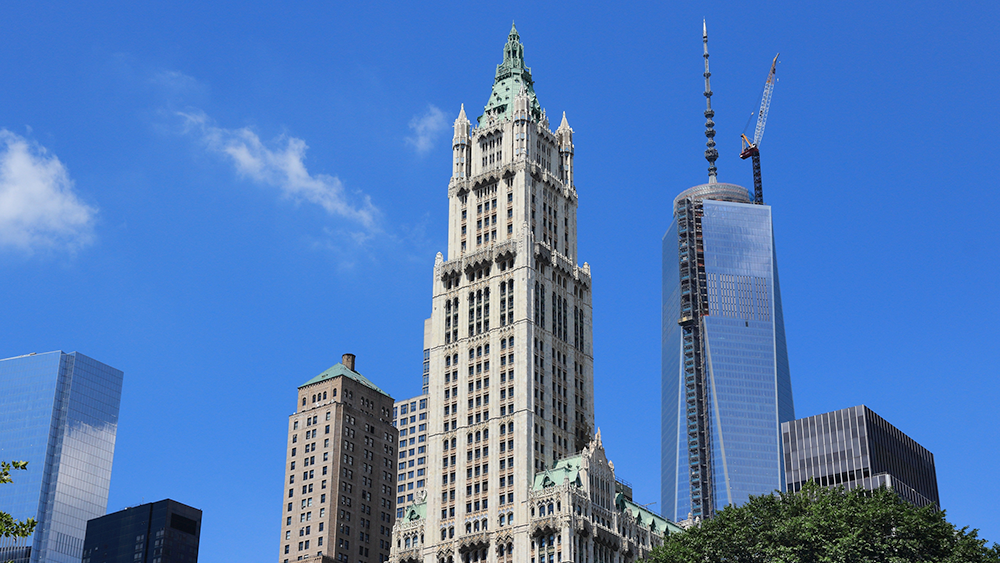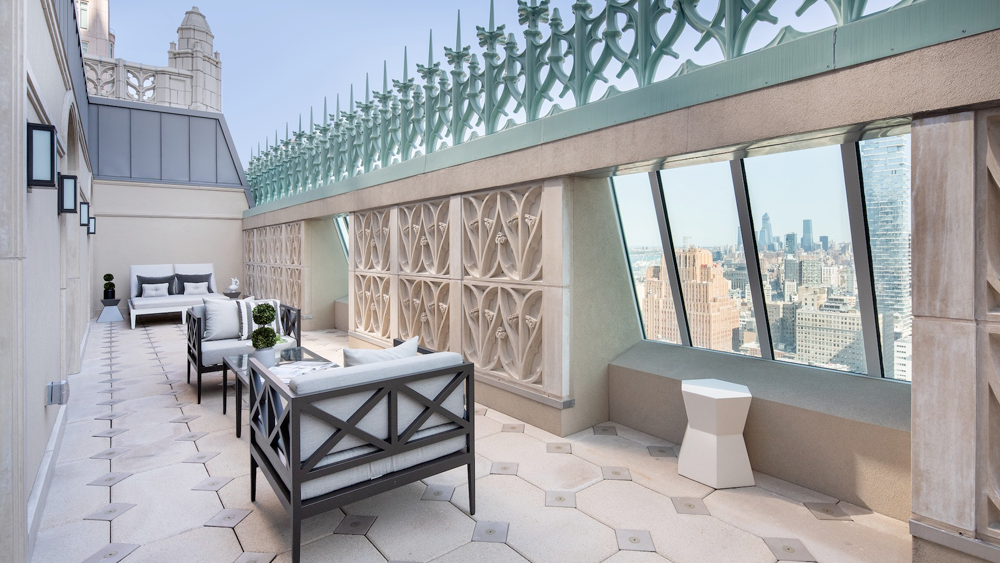The Battle to Save New York’s Oldest Skyscrapers
- Youtube Views 992,879 VIDEO VIEWS
Video narrated by Fred Mills. This video and article contain paid promotion for Paradox.
HOW LONG can a building survive? New York is a city famous for its relentless evolution but it’s not a place that’s sentimental about its legacy when something shiny and new comes around.
The economic engine that made Manhattan one of the densest skyscraper forests in the world is the same that has brutally destroyed many of its historical gems: the Hippodrome Theatre bulldozed in 1939 and both the Singer Building and the iconic Pennsylvania Station were destroyed in 1969.
Landmark status can offer some protection for buildings, but that doesn’t make it a done deal. While that might offer a lifeline for much loved places, what does it take for a historic building to thrive? In a city where multi billion dollar skyscrapers set the tone of the debate, what can older buildings still offer other than heritage?

Above: The Woolworth Building is an iconic sight on the New York skyline.
The Woolworth Building may be one of the city's most iconic skyscrapers but its chequered history has not always lived up to its grand appearance. Built at the start of the skyscraper boom in a style that quickly went out of fashion and with a huge maintenance bill, the story of its survival tells us a lot about how a building lives in the Big Apple.
In 1910 the retail tycoon Frank Winfield Woolworth commissioned a modest new headquarters for his company, declaring he “had no desire to erect a monument that would cause posterity to remember me.” That quickly went out of the window when later that year he approved plans for a skyscraper that would be the tallest building on earth and earn the nickname the “cathedral of commerce.”
When completed in 1912, it stretched 241-metres into the sky, a height that would not be beaten until the completion of the Chrysler Building in 1930. But by the 1960s, the tower had started to suffer. New generations of skyscrapers had risen up and the Woolworth Building had lost its lustre.

Above: The Woolworth Building’s ornate style soon became old fashioned.
Architecture had moved on. Ornamentation was out and minimalism was in. The world the Woolworth Building represented seemed archaic by comparison and survival was by no means assured.
One way a building can secure its future in New York is by becoming a registered landmark. The New York City Landmarks Preservation Commission was established in 1962 in the wake of the controversial demolition of Penn Station. It has since gone on to protect Washington Square Park and Grand Central Terminal.
But it’s not a get out of jail free card. In 1970 The Preservation Committee scrapped a plan to award the Woolworth Building landmark status after its owners protested, citing the strict restrictions placed on modifications to the building.
Repair bills were starting to stack up. By 1962 the original terracotta tiles used to clad the building were under constant repair and cracks had let in rainwater which had begun to rust the steel structure.

Above: By the 1970’s the building’s ornate tiling required extensive repair work.
In 1977, extensive refurbishments were carried out which included replacing all the exterior windows and re-tile the building. Costs spiralled from USD $8M to USD $22M. With over half the final cost paid for through tax breaks, the Woolworth Building was finally given city landmark status in 1982.
The venerable Woolworth Building was saved from the wrecking ball, but whether or not it thrived was another matter. Skip forward to the present day and it’s not just the Woolworth Building that is facing such problems.
Since the Covid-19 pandemic, office space of all types is struggling to survive as New York experiences stiff competition from rivals like Miami and as working patterns change post-Covid.

Above: After the coronavirus pandemic, many New York skyscrapers are facing the same challenges as the Woolworth Building.
Real estate expert Hiten Samtani told The B1M, “COVID unlocked remote work in a way that you can't really put that rabbit back in the hat. Tenants are still signing new leases, but then you go look back at what they had before… That's where the rub is, right?”
Even the Union Carbide Building, the skyscraper that once signalled the changing of the guard in architectural fashions has now been knocked down to make way for the new generation of towers.
The Woolworth Building’s elaborate architecture has now come of age and its owners are now using that prestige to reinvent the skyscraper as luxury accommodation, a task that’s not as easy as it sounds..
In 2012, developer Alchemy Properties began a seven year project to convert the top 30 floors into 33 apartments and a five story “castle in the sky penthouse”. But that’s easier said than done. Given the building’s location in lower Manhattan and the delicate ornamentation meant building a crane next to, or on the roof of the building was out of the question.

Above: A sky terrace in the Woolworth Building’s lavish penthouse. Courtesy of Travis Mark.
To get around this, every element of the refurb had to be small enough to be transported in one of the building’s lift shafts. Because of these special measures, once again costs began to spiral. The initial budget for the refurb was USD $150M including the sale of the building. The final price is not known, but the bill is reportedly up to USD $220M.
So – will it all pay off? Despite the opulent surrounding of the luxury apartments and the rise in demand of super premium residential properties in Manhattan, sales of the units were slow. As of 2021, only 22 of the 33 apartments were sold and earlier this year the penthouse, a 9,700 square foot castle in the sky, finally sold after six years on the market and for USD $30M, a fraction of the USD $110M asking price.
But according to Samtani there’s a clear reason for this.
“What looks incredible from the outside and you could argue that the Woolworth Building is one of the prettiest buildings in the world doesn't necessarily translate into the kind of prices that a hedge fund manager or a private equity titan or a tech executive would want to pay,” he said.
What does that mean for the iconic Woolworth Building? Is this the beginning of a new era or just another false start? Only time will tell, but if there’s anything this storied building can tell us is that even for an architectural icon, nothing is taken for granted.
If you think you can do a better job of running New York, try it for yourself with Cities: Skylines 2.
This video contains paid promotion for Paradox. Additional footage and images courtesy of Library of Congress, Metro-Goldwyn-Mayer, The Dronalist, Google Earth,
Crossinglights, Foster + Partners, Travis Mark and Alchemy Properties.
We welcome you sharing our content to inspire others, but please be nice and play by our rules.








